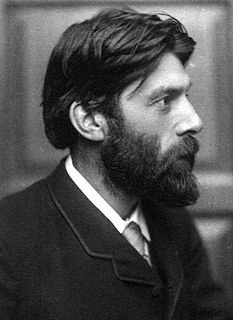In poetry, metre (British) or meter is the basic rhythmic structure of a verse or lines in verse. Many traditional verse forms prescribe a specific verse metre, or a certain set of metres alternating in a particular order. The study and the actual use of metres and forms of versification are both known as prosody.

In linguistics, specifically phonetics and phonology, schwa is the mid central vowel sound in the middle of the vowel chart, denoted by the IPA symbol, or another vowel sound close to that position. An example in English is the vowel sound of the 'a' in the word about. Schwa in English is mainly found in unstressed positions, but in some other languages it occurs more frequently as a stressed vowel.
In linguistics, and particularly phonology, stress or accent is relative emphasis or prominence given to a certain syllable in a word, or to a certain word in a phrase or sentence. This emphasis is typically caused by such properties as increased loudness and vowel length, full articulation of the vowel, and changes in pitch. The terms stress and accent are often used synonymously in this context, but they are sometimes distinguished. For example, when emphasis is produced through pitch alone, it is called pitch accent, and when produced through length alone, it is called quantitative accent. When caused by a combination of various intensified properties, it is called stress accent or dynamic accent; English uses what is called variable stress accent.
Syllabic verse is a poetic form having a fixed or constrained number of syllables per line, while stress, quantity, or tone play a distinctly secondary role — or no role at all — in the verse structure. It is common in languages that are syllable-timed, such as Japanese or modern French or Finnish — as opposed to stress-timed languages such as English, in which accentual verse and accentual-syllabic verse are more common.
In phonology, syncope is the loss of one or more sounds from the interior of a word, especially the loss of an unstressed vowel. It is found both in synchronic analysis of languages and diachronics. Its opposite, whereby sounds are added, is epenthesis.
Isochrony is the postulated rhythmic division of time into equal portions by a language. Rhythm is an aspect of prosody, others being intonation, stress and tempo of speech.
Like many other languages, English has wide variation in pronunciation, both historically and from dialect to dialect. In general, however, the regional dialects of English share a largely similar phonological system. Among other things, most dialects have vowel reduction in unstressed syllables and a complex set of phonological features that distinguish fortis and lenis consonants. Most dialects of English preserve the consonant and many preserve, while most other Germanic languages have shifted them to and : compare English will and then with German will [vɪl] (listen) ('want') and denn [dɛn] (listen) ('because').
French phonology is the sound system of French. This article discusses mainly the phonology of Standard French of the Parisian dialect. Notable phonological features include its uvular r, nasal vowels, and three processes affecting word-final sounds: liaison, a specific instance of sandhi in which word-final consonants are not pronounced unless they are followed by a word beginning with a vowel; elision in which certain instances of (schwa) are elided and enchaînement (resyllabification) in which word-final and word-initial consonants may be moved across a syllable boundary, with syllables crossing word boundaries:
Stress is a prominent feature of the English language, both at the level of the word (lexical stress) and at the level of the phrase or sentence (prosodic stress). Absence of stress on a syllable, or on a word in some cases, is frequently associated in English with vowel reduction – many such syllables are pronounced with a centralized vowel (schwa) or with certain other vowels that are described as being "reduced". Various phonological analyses exist for these phenomena.
Iambic pentameter is a type of metric line used in traditional English poetry and verse drama. The term describes the rhythm, or meter, established by the words in that line; rhythm is measured in small groups of syllables called "feet". "Iambic" refers to the type of foot used, here the iamb, which in English indicates an unstressed syllable followed by a stressed syllable. "Pentameter" indicates a line of five "feet".
In phonetics, vowel reduction is any of various changes in the acoustic quality of vowels, which are related to changes in stress, sonority, duration, loudness, articulation, or position in the word, and which are perceived as "weakening". It most often makes the vowels shorter as well.
In the analysis of poetic meter, weak position is either of two things:
Milton's Prosody, with a chapter on Accentual Verse and Notes is a book by Robert Bridges. It was first published by Oxford University Press in 1889, and a final revised edition was published in 1921.
In his book Milton's Prosody, Robert Bridges undertakes a detailed analysis of the prosody of John Milton's Paradise Lost. Bridges shows that there are no lines in Paradise Lost with fewer than ten syllables, and furthermore, that with a suitable definition of elision, there are no mid-line extra-metrical syllables. He also demonstrates that the stresses may fall at any point in the line, and that although most lines have the standard five stresses, there are examples of lines with only three and four stresses. All this amounts to a statement that Milton was writing a form of Syllabic verse. Bridges explains this in historical terms by observing that Milton followed the practice of Geoffrey Chaucer, who — in Bridges' view — adopted the Romance prosody of French verse, which was syllabic, having itself derived from the practice of Latin poets who through a corruption of Greek quantitative meters also counted syllables. Bridges notes that the approach Milton takes in Paradise Lost represents a certain tightening of the rules, compared to his earlier work, such as Comus, in which he allowed himself the Shakespearian 'liberty' of a feminine ending before a caesura.
In his book Milton's Prosody, Robert Bridges continues his detailed analysis of the prosody of John Milton's Paradise Lost, by looking at the changes in Milton's practice with his later poems Paradise Regained and Samson Agonistes.
The book Notes on Prosody by polyglot author Vladimir Nabokov compares differences in iambic verse in the English and Russian languages, and highlights the effect of relative word length in the two languages on rhythm. Nabokov also proposes an approach for scanning patterns of accent which interact with syllabic stress in iambic verse. Originally Appendix 2 to his Commentary accompanying his translation of Aleksandr Pushkin's Eugene Onegin, Notes on Prosody was released separately in book form.
The main description of Taos Tiwa phonology was contributed by George L. Trager in a (pre-generative) structuralist framework. Earlier considerations of the phonetics-phonology were by John P. Harrington and Jaime de Angulo. Trager's first account was in Trager (1946) based on fieldwork 1935-1937, which was then substantially revised in Trager (1948). The description below takes Trager (1946) as the main point of departure and notes where this differs from the analysis of Trager (1948). Harrington's description is more similar to Trager (1946). Certain comments from a generative perspective are noted in a comparative work Hale (1967).
The traditional English pronunciation of Latin, and Classical Greek words borrowed through Latin, is the way the Latin language was traditionally pronounced by speakers of English until the early 20th century.
This article summarizes the phonology of Standard Chinese.
Puluwatese is a Micronesian language of the Federated States of Micronesia. It is spoken on Poluwat.




